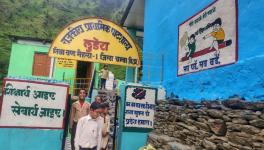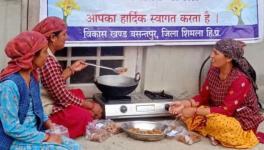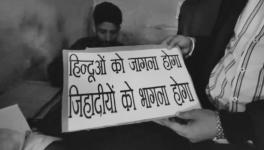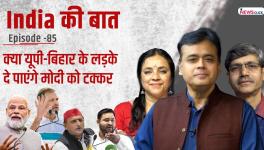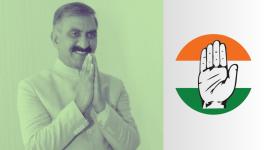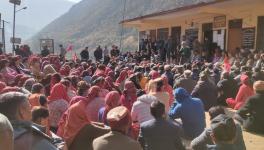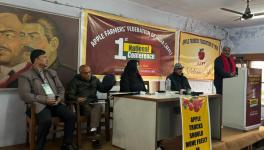The Unnecessary Jargon of the Ease of Living Index
O Delhie Mahra Pahda ra dil Shimla, mahra desha ra dil, o delhie, mahre desha ra dil Shimla (O’ Delhi the heart of the mountains is Shimla, O’ Delhi our Nations heart is also Shimla), is a popular song in the pahadi dialect, which has been sung across Himachal Pradesh for long.
The song signifies how dear the town of Shimla is to the mountain state of Himachal Pradesh and its people. The town featuring as the best in the ‘Ease of Living Index’ (EoLI) in the category of ‘cities with less than a million population’ in the country was extremely stupendous. The heart was filled with joy and pride, as someone who has lived there and served the city for five years being the deputy mayor, but the mind was nudging to think differently – to look at the situation critically.
The reason being that the residents of Shimla themselves were not ready to believe that they have the easiest way of living in the country, having experienced the COVID-19 pandemic etc. Or, it can also be that the new ranking exposed how cities fare in our country – if Shimla is the best, we can only imagine how people live and how their livelihoods are in the rest.
Even the local minister from the town did not believe it and asked the officials to focus on developmental work. In another article in a regional daily, Raja Bhasin, a noted historian of the town and author, wrote a lengthy piece decrying this whole exercise. When I spoke to some of the residents in Bengaluru, even they were surprised about being adjudged the best city in the country in ‘the million plus’ category.
Why is it that the people and the data-driven matrix of EoLI are diametrically opposite? Well, there may be many reasons for it, but one of the foremost is that the citizens' survey that was made part of this exercise has exposed the EoLI matrix. Those cities that were adjudged best in the index ranked not so good in the citizens' survey.
The other reason could also be because after the lockdown, the most vibrant towns/the smart cities (apparently most of the top 10 are designated smart cities) were the worst hit as far as reverse migration is concerned. So how can such a scenario be termed as a high index for EoLI? Take for example, in Shimla, an MLA had to sit outside the deputy commissioner’s office to ensure that ration is properly distributed to the poor and the migrant workers. Topping the list in EoLI in such a scenario was definitely a surprise.
Similarly, the major source of livelihood for a large section of the people in this hilly town is tourism, with nearly 4.5 million tourists every year. However, the pandemic and the ensuing lockdown all but smashed this sector, resulting in large-scale loss of employment. How can this be termed as ease of living? Adding to this, the Shimla Municipal Corporation served sanitation bills worth thousands of rupees to hospitality establishments despite the fact that they were closed. All this was beyond comprehension for the local population to believe that they have the best ‘ease’!
Also read: Amid Declining Groundwater and Mismanagement, Who’s Really Responsible for Water Scarcity?
Let us understand what this EoLI is all about. The Ministry of Housing and Urban Affairs released a “funny” index- Ease of Living of 111 cities in India on March 4, 2021. According to the list, two set of cities were enumerated in the period, January 2020 to March 20, 2020; these sets were- cities above a million population and the other with population less than that. According to the matrix of the EoLI, the cities were evaluated under four pillars comprising (i) Quality of life in cities, (ii) Economic ability of cities, (iii) Sustainability and (iv) Citizens perception survey.
Then there were 13 categories for further evaluation - education; health; housing & shelter; WASH (Water, Sanitation and Hygiene) & SWM (solid waste management); safety & security; recreation; economic development; economic opportunities; environment; green spaces; energy consumption; and city resilience. There were 49 more indicators to further evaluate the ease of living.
WHAT IS EASE OF LIVING?
'Ease of Living' as a term, though widely used in urban policy and programming, has no standard definition. For some, it is fundamentally tied to physical amenities such as water supply, solid waste management, parks and green space, etc.; for others, it relates to cultural offerings, career opportunities, economic dynamism or safety.
This is also linked to our collective vision of a city. Charles Landry in The Art of City Making gives an interesting definition of a city, thus comprising ease of living as well:
“The city is a multi-faceted entity. It is an economic structure -an economy; it is a community of people- a society; it is a designed environment-an artefact; and it is a natural environment- an ecosystem.
Also read: Unsustainable Cities: Stop Piecemeal Approach, Constitute National Commission on Urbanisation
And it is all four of these -economy, society, artefact and ecosystem governed by an agreed set of rules- a polity. Its inner engine or animating force, however, is its culture. Culture- things we find important, beliefs and habits- gives the city its distinctiveness-its flavour, tone and patina.”
There are several other ways of defining a city where the people have a better life, livelihoods and creativity.
Another concept is that of a city that has a participatory role of its citizens in decision making. The “Right to the City” as propounded by Lefebvre and staunchly advocated by David Harvey is to reclaim spaces that are not only physical but to be part of the planning process in the cities, more linked to the humongous surplus that gets generated in the production and reproduction of capital in cities and its democratisation.
What better occasion to remember the participatory and ‘reclaiming spaces in the urban’ than to commemorate the 150th anniversary of the Paris Commune which began on March 18. The workers took the city and brought in imaginative legislations that dominated the world citizens’ ambition of ‘what a city should be’, even now. Education was made free, child labour was abolished, work towards establishing progressive secular social democracy, and remission of rent was undertaken during the siege.
Of the many reasons, one of the most important for easy living, especially when the pandemic struck, is ‘remission of rent’, which even the US allowed for its citizens during the pandemic. No such thing was offered in India and none of the cities could even imagine of such a decision.
All of this would make the lives of people easy in cities. Was the matrix able to catch this imagination of cities? The answer is an affirmative no. One of the reasons that can be cited is that the exercise was finished by March 20, 2020, before the lockdown began. This will be erroneous as resilience and sustainability happen to be important ingredients of the EoLI matrix, and if all these issues are not taken into consideration then these terms have no meaning, but are mere jargons.
SUBJECTIVITY DRIVES THE PROCESS OF DECISION MAKING
The subjectivity of both the government i.e., the Ministry of Housing and Urban Affairs and the consultant, Institute for Competitiveness (IfC) drove this exercise for deciding on the ‘ease of living index’.
The government considers cities to be “engines of growth” and competitiveness is inherent in the city planning and shaping processes. The cities are treated as entrepreneurs and those fulfilling these two criteria are the most loved ones by the ministry. These criteria which flow from various documents of the government including the XV FC (15th Finance Commission), considered to be independent, however, advocates the same principle- transforming cities into competitive places, where user charges and economic sustainability are the two bedrock formations, without empowering them.
Also read: Why Indian Cities Are Drifting Away from Sustainable Development Goals
Likewise, the subjectivity of the consultant, IfC, is not a hidden fact. Michael Porter, founder and pioneer of this group, vociferously advocates in his writings and videos uploaded on the website that the goal of the institute is to “reinforce capitalism” in the cities. The challenges, especially that are posed by the American people to the forms of urban governance, which is, free-market capitalism, and the alternatives suggested by Bernie Sanders in the election campaign is a matter of great concern to Porter. So, reinforcing the values of capitalism is one of the ardent tasks as a knowledge consultancy, which this group has. And these ideas travel from corporate philanthropy to CSR initiatives and furthermore.
So, the subjectivity, of both this government and the consultant which was specifically picked up for the EoLI is not a hidden fact. In fact, this goes quite in opposition to the mandate of Sustainable Development Goals (SDGs) which must be incorporated while working out the EoL index.
John Closs, the then executive director of UN Habitat III in Quito kept on reminding the gathering, of which I was also a part, to go back to the basics of planning and shed the laissez-faire (free market economy) method of city development. Not only is it extremely exclusive, where the interests of large transnational corporations are secured, but it also widens the gap between the people and makes the city spaces extremely iniquitous. However, we, in India, continue to treat cities as spaces of economic activity and business propeller, without noticing the massive damage that is happening to the livelihoods of the people and common spaces. This is not the secure way of ‘ease of living'.
Then what for are the cities targeted in the EoL index. Many of the people, especially those who are linked with the urban think tanks like the National Institute of Urban Affairs (NIUA), Centre for Policy Research (CPR) could not openly say, but when asked privately, were unequivocal in condemning this entire process. They say that this matrix and the end result is to suggest to the large corporations who are entering cities that the top-ranking cities are the best places to invest, especially with the smart city baggage that they carry. Since the matrix is data-driven, and most of the investments are to take place in the internet of things, in the making of command centres and so on, these rankings help these tech-companies to have a clearer vision for their investments.
Also read: Budget 2021: Where Are the Smart Cities and Urban Employment Guarantee, FM and PM?
But its an irony that after negating the citizens' aspirations and even their markings in the citizen survey, the government was keen to go ahead with such subjective understanding of the cities.
For sure, the ease of living index as designed by the ministry and the consultant is not the objective way of arriving at a conclusion. This will not make the people believe in the credibility either of the institution or the consultant. Instead of this large jargon, there could have been easier ways of local empiricism to arrive at the conclusion.
But all said and done what for all this data is being collected, is it for catching the imagination and aspirations of the people in the cities or for some large corporates who are eyeing cities as an investment avenue? Instead, one simple thing that the ministry must do is to empower the city governments and the people by devising ways and mechanisms where the ownership of the city is reclaimed by them and they do not feel alienated.
(The author is former deputy Mayor of Shimla. The views are personal.)
Get the latest reports & analysis with people's perspective on Protests, movements & deep analytical videos, discussions of the current affairs in your Telegram app. Subscribe to NewsClick's Telegram channel & get Real-Time updates on stories, as they get published on our website.









